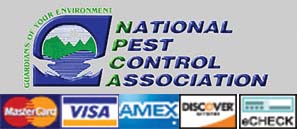SEPTEMBER BLOG Yellow Jackets in Baltimore, Maryland
Yellow jackets are a common sight in Baltimore, Maryland during the summer and fall months. These wasps can have aggressive behavior and painful stings. While they are not typically considered to be a major pest, they can be a nuisance and even dangerous if they are disturbed.
There are several species of yellow jackets found in Baltimore, but the most common is the Eastern yellowjacket. These wasps are about ⅜ to ⅝ inches long and have a yellow and black striped abdomen. They are most active during the day, and they are attracted to food, especially sweet foods and meats.
Yellow jackets typically build their nests underground, but they can also build nests in hollow logs, trees, attics, between walls, or under eaves of houses. If you see a yellow jacket nest, it is important to avoid disturbing it. If you do disturb the nest, the yellow jackets may swarm and sting you.
If you are stung by a yellow jacket, it is important to remove the stinger as quickly as possible. You can do this by scraping the stinger with a credit card or other flat object. Apply a cold compress to the area to help reduce pain and swelling. If you have a severe allergic reaction to the sting, seek medical attention immediately.
What can I do at home to prevent yellow jackets from nesting in my yard or home?
- Keep your trash bins closed tightly.
- Do not leave food out for extended periods of time.
- Seal up any cracks or holes in your home’s exterior.
- Plant flowers that are not attractive to yellow jackets, such as lavender and mint.
If you have a yellow jacket nest on your property, it is best to call a professional pest control company to remove it. Do not attempt to remove the nest yourself, as you could be stung multiple times.
Here are some additional tips for dealing with yellow jackets:
- If you see a yellow jacket, do not swat at it. This will only make it more likely to sting you.
- If you are stung, stay calm and do not move around too much. This will help to reduce the amount of venom that is injected.
- If you are allergic to yellow jacket stings, be sure to carry an EpiPen with you at all times.
Yellow jackets are a nuisance, but they can be dangerous if they are disturbed. By following these tips, you can help to prevent yellow jackets from nesting in your yard or home and avoid being stung.
CAN I TREAT FOR YELLOW JACKETS MYSELF?
You can treat for yellow jackets yourself, but it is important to be careful and is not recommended as it comes with major risks. Yellow jackets are aggressive and can sting multiple times. If you are not comfortable dealing with them, it is best to call a professional pest control company.
If you are allergic to yellow jacket stings, it is important to have someone else treat the nest for you. You should also carry an EpiPen with you at all times in case you are stung.
Here are some other tips on yellow jackets:
- Do not try to remove the nest yourself. This could make the yellow jackets more aggressive and could lead to multiple stings.
- If you see a yellow jacket nest, mark its location so that you can avoid it.
- If you are stung by a yellow jacket, remove the stinger as quickly as possible and apply a cold compress to the area.
- If you have a severe allergic reaction to the sting, seek medical attention immediately.
By following these tips, you can safely treat for yellow jackets and avoid being stung.
What will a professional pest control company do to treat Yellow Jackets?
A professional pest control company will use a variety of methods to treat yellow jackets, depending on the location of the nest and the severity of the infestation. Some of the most common methods include:
- Spraying the nest with an insecticide. This is the most common method for treating yellow jackets. The insecticide will kill the yellow jackets on contact and prevent them from returning to the nest.
- Using a dust insecticide. Dust insecticides can be used to treat yellow jackets that are nesting in hard-to-reach places, such as underground nests. The dust will kill the yellow jackets when they come into contact with it.
- Using a vacuum. A vacuum can be used to remove yellow jackets from a nest. This method is not as effective as spraying or dusting, but it can be used in places where spraying or dusting is not possible.
- Trapping yellow jackets. There are a variety of traps that can be used to catch yellow jackets. These traps can be used to reduce the number of yellow jackets in an area, but they are not effective at killing the entire nest.
The professional pest control company will also take steps to prevent yellow jackets from returning to the area. This may include sealing up cracks and holes in the foundation, removing food sources, and planting flowers that are not attractive to yellow jackets.
If you have a yellow jacket problem, it is best to call a professional pest control company. They will be able to assess the situation and recommend the best course of treatment.
Here are some additional things to keep in mind when hiring a professional pest control company:
- Get multiple estimates.
- Ask about the company’s experience with yellow jackets.
- Make sure the company is licensed and insured.
- Get everything in writing, including the price of the service.
By following these tips, you can be sure to find a professional pest control company that can safely and effectively treat your yellow jacket problem.
INTERESTING FACTS ABOUT YELLOW JACKETS IN BALTIMORE, MARYLAND
- Yellow jackets are social insects, meaning they live in colonies. A typical colony can have anywhere from 50 to 5,000 yellow jackets.
- The queen yellow jacket is the only one that can lay eggs. The workers are female, but they are not able to reproduce.
- Yellow jackets are carnivores, meaning they eat other insects. They also eat nectar and other sweet foods.
- Yellow jackets are attracted to bright colors, such as yellow and black.
- Yellow jackets are known for their aggressive behavior. They will sting if they feel threatened.
- The sting of a yellow jacket can be painful, but it is usually not fatal. However, people who are allergic to yellow jacket stings can have a severe reaction.
- Yellow jackets are important pollinators. They help to pollinate many different types of flowers.
- Yellow jackets are active during the day. They are most active in the late summer and early fall.
- Yellow jackets can build their nests in a variety of places, including underground, in trees, in walls, and in attics.
If you find a yellow jacket nest, it is important to avoid disturbing it. If you do disturb the nest, the yellow jackets may swarm and sting you.
If you are stung by a yellow jacket, remove the stinger as quickly as possible. Apply a cold compress to the area to help reduce pain and swelling. If you have a severe allergic reaction to the sting, seek medical attention immediately.
We offer free estimates and can often remove a yellow jacket nest the same day and you don’t even need to be home! Call us today at 410-989-1919!





